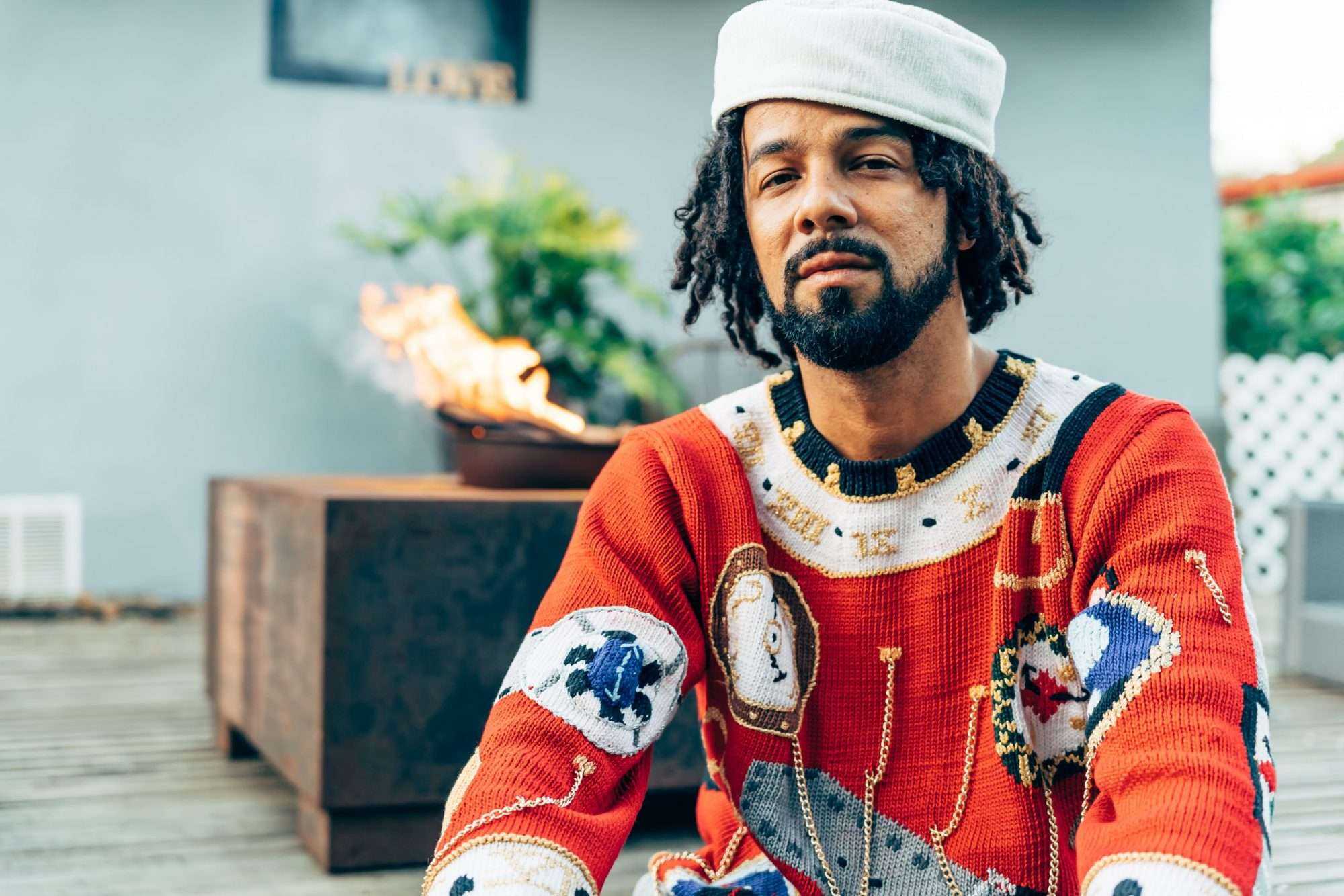on
BY SIMONE J. SMITH
“We are navigating through a world where we need to connect. Enemies can love the same song, this is how I know we are all connected.” Kees Dieffenthaller
Of the many musical acts that call Trinidad & Tobago home, none embody the culture of the island more than KES (aka KES THE BAND) the eclectic outfit behind some of modern Caribbean music’s most indelible anthems.
When we hear the name Kes, some do not take into account that although the band is named after the lead singer Kees Dieffenthaller, there is a cornucopia of talent that has launched this band into stardom. The band includes:
- Kees Dieffenthaller (Vocals)
- Hans Dieffenthaller (Drums)
- Jon Dieffenthaller (Guitar)
- Riad Boochoon (Bass)
- Ricardo Rameshwar (Keyboards)
- Mario Callender (Keyboards0
- Robert Persaud (DJ & Samples)
Their native melting pop (Trinidad & Tobago) continues to inspire them and together they have created a unique blend of: Soca, Calypso, Reggae, and pop to bring the sounds of the Caribbean to the world stage.
Celebrated for their instant Soca classics (“Wotless,” and “Savannah Grass”) and laid-back island pop jams (“Tuesday on the Rocks,” and “Hello”), the band has brought Trinidad to the world, sharing stages with the likes of: Will Smith, Major Lazer and John Legend, and collaborating with artists from Wizkid to Snoop Dogg.
I had a chance to sit down and shoot the breeze with lead singer Kees, and he shared with me the birth of Kes the Band.
“My life has always been full of music,” Kees begins opening up nostalgically. “We grew up in San Fernando, and in those days you were either playing in the yard, or watching T.V. One of my friends had a satellite, so we had access to American channels.
Hans is the mastermind who sparked the idea of his little brothers forming a band. He built his own drums with buckets, and made a hi-hat with PVC. Jon had a bass guitar he got at a second-hand shop, and he used a nail for pickups. I always sang, so I assumed that role. I was still very young, so they would throw me in from time to time.”
Eventually, the boys’ father helped them purchase proper instruments and build a stage in their backyard, as younger brother Kees looked on. It was only after making the decision to compete and win a local talent competition that Kees, then a blossoming R&B singer, joined the group. As the universe would have it, they won with a cover of Queen’s “Bohemian Rhapsody.” It was official; KES THE BAND had come to life, and the world was about to be introduced to a musical manifesto.
“I will never forget how it all started; Simone, picture a Caribbean setting with sugar cane, green grass, and us playing rock. Yes, it may sound a little out of place, but it was what set us apart.
Music became a way of life. The real magic happened when we were introduced to Soca.”
In 2005, the band played its first show as KES THE BAND, opening for Sugar Ray and Beenie Man at Port of Spain’s Club Zen. From jump, the group defied the conventions of Soca. Their first single “Lion” was a Reggae-inspired track with an acoustic guitar melody released during the summertime, which is outside of the traditional window for releasing Soca music.
“We have had to deal with a lot of politics,” Kees confesses. “The band released several albums in the late 2000’s, but we remained an underground favourite until 2011, when conditions aligned for our first, season-defining Carnival smash “Wotless.” The name of the song came from a local phrase to describe “bad” (or worthless) behaviour. We wanted this track to celebrate the carefree spirit of Carnival, and usher in a new era of Soca expression.”
‘Wotless’ really established us in the Caribbean diaspora,” KES recalls. “We started to tour the islands, and it started to creep its way into different places.”
As their fame grew, internationally the band began to grow a fan base. It is no wonder that KES made their live TV debut with an appearance on the Late Show with Stephen Colbert performing “Savannah Grass” via Zoom alongside Jon Batiste and the Stay Human Band. The band was also interviewed on The Breakfast Club and featured in Conde Nast Traveler and Essence.
“Resistance is good for strength, and I am glad that my career wasn’t handed to me,” Kees says proudly. “We had to work for it. In this business, you have to face a great amount of adversity.
This is the first time that we are playing as a band in three years. One place that I have to big up is Toronto. We used to come here every year, so it feels really good to be back. We are so thankful to deejays like Dr Jay who played our music out here, even when we were not getting played at home. We will always celebrate Toronto. When I do a show here, it is an emotional experience for me.
Being on stage is a naked place. Seeing human exchange energy was what I missed. I love seeing people drop their walls and connect. Remembering our humanity, that is the stuff that is real.
I feel a lot more intentional in the work that I am doing, and I always take time to enjoy the moments. We lost a band member this year, and even though he is not with us physically, he is with us all the way.”
You may have missed Kes the Band when they were here last week, but if you are a fan, and you have the means to travel, you can find Kes the Band touring details at https://kestheband.com/tour-1/
Stay in the loop with exclusive news, stories, and insights—delivered straight to your inbox. No fluff, just real content that matters. Sign up today!












